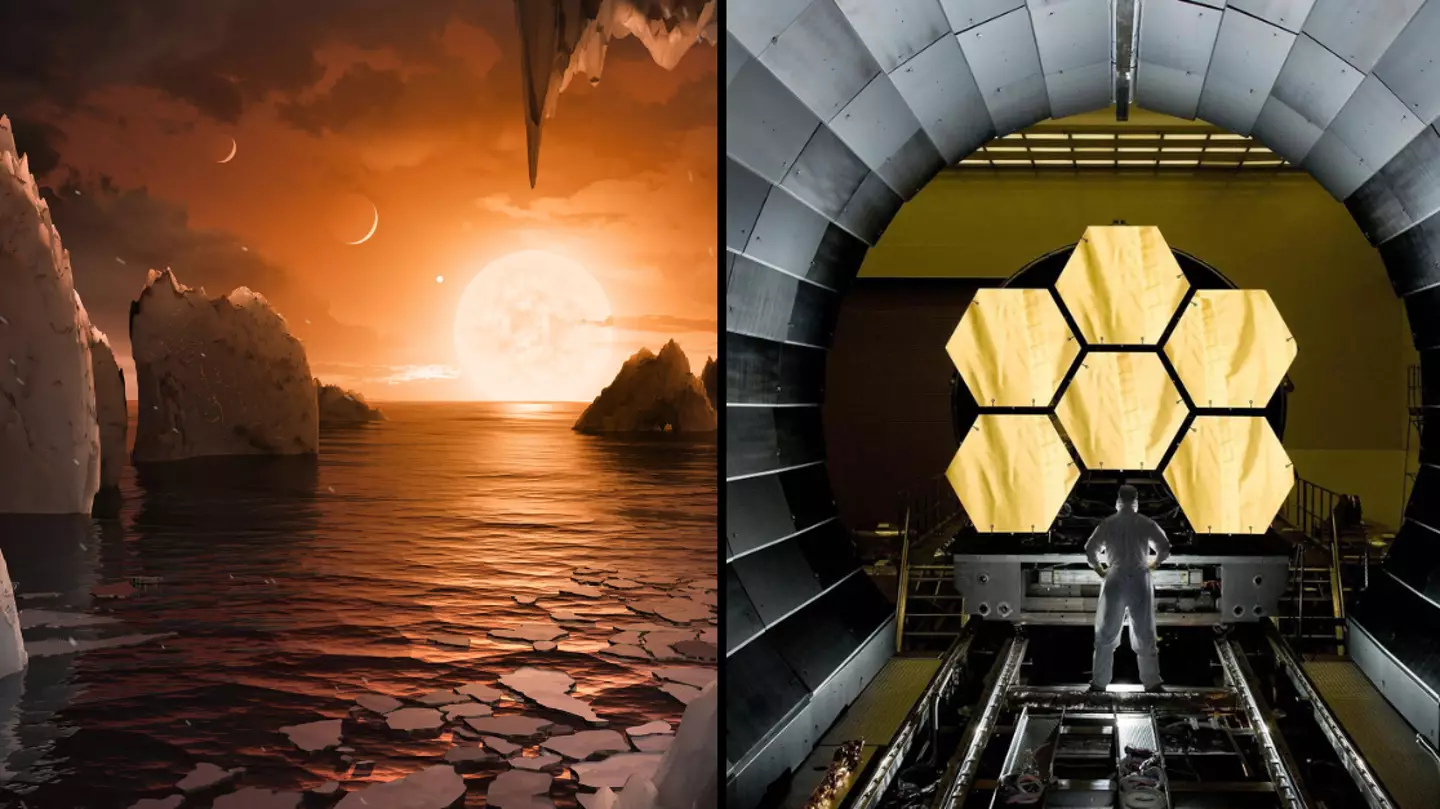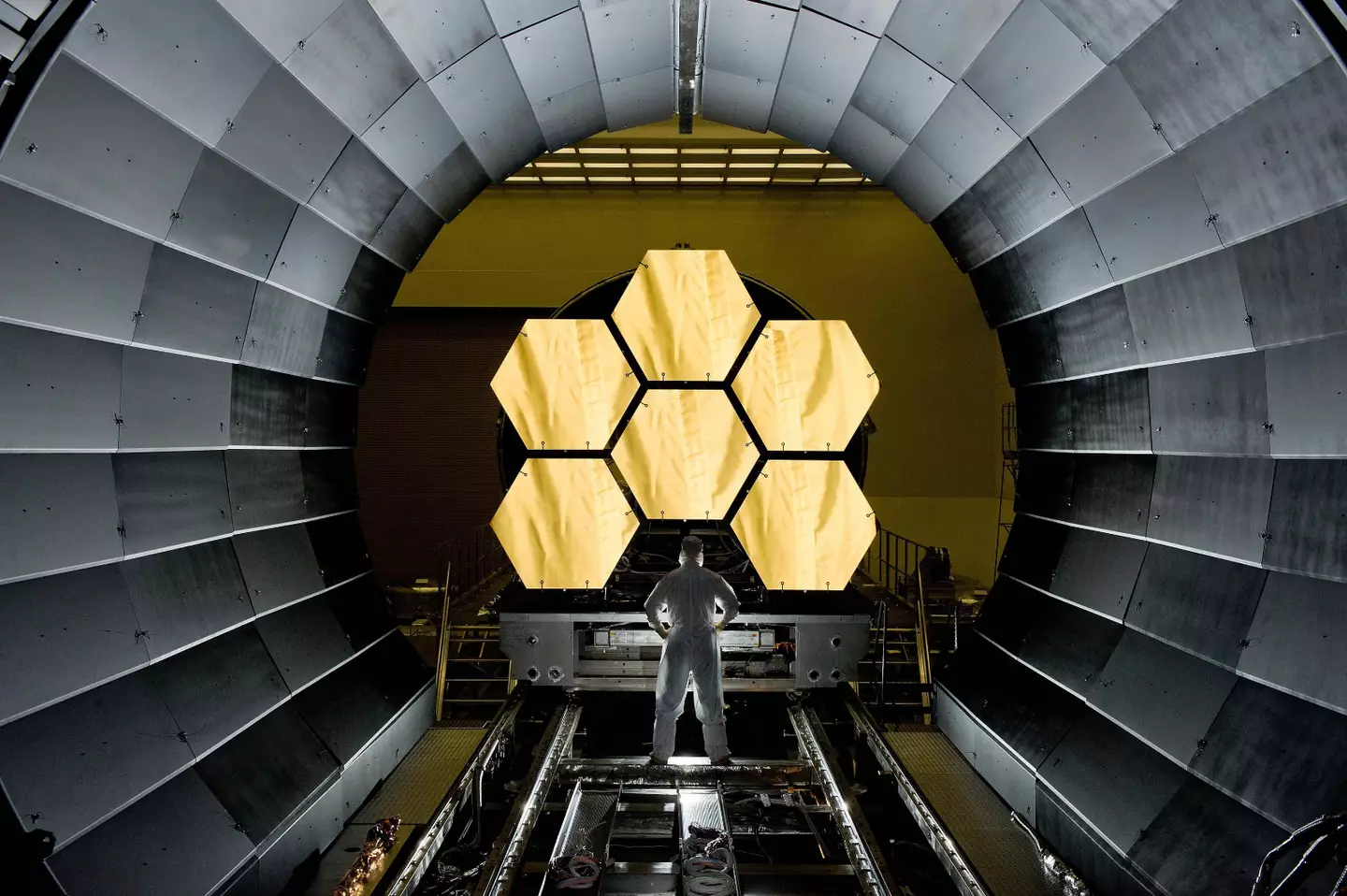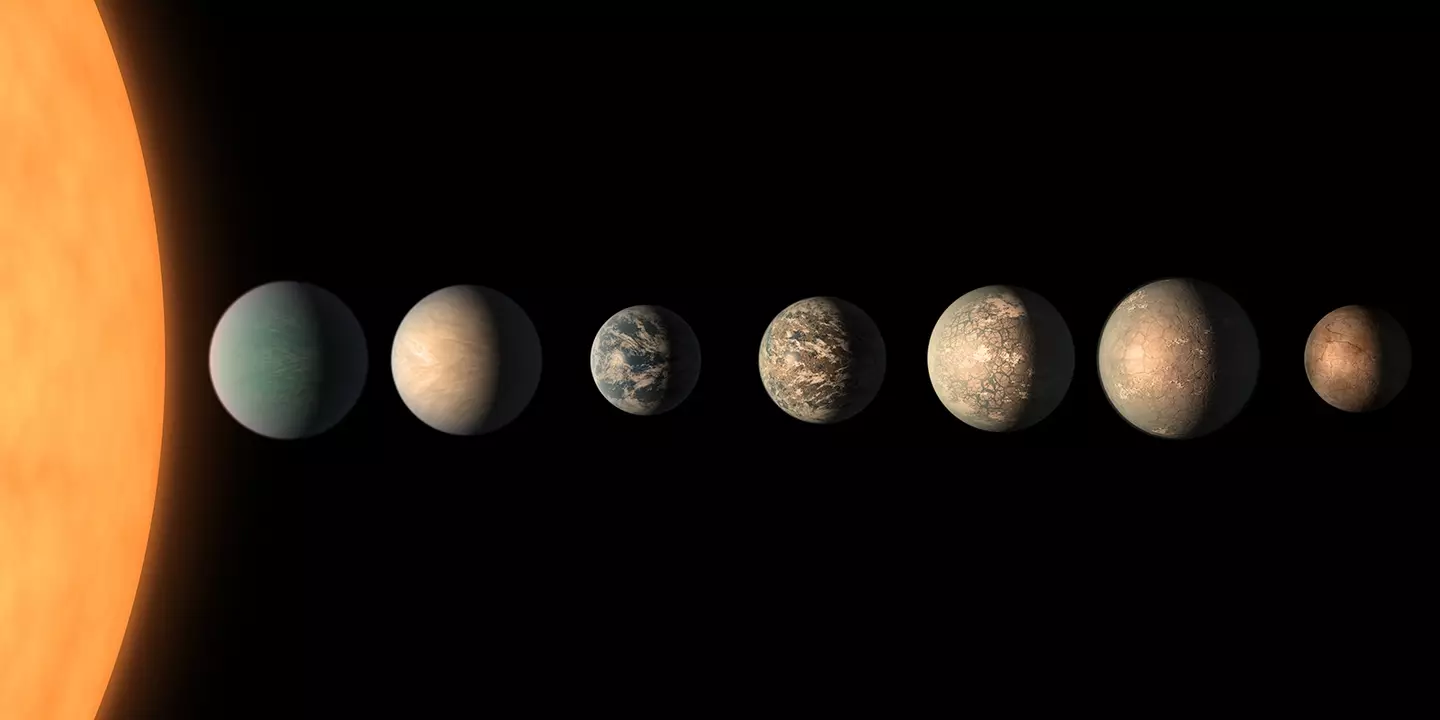
For more than half a decade, NASA has been looking into deep space for signs of life - and the key to finally finding that is the $10 billion James Webb Space Telescope.
Commissioned back in 2018 and launching into the cosmos in 2021, the NASA telescope is at the forefront of deep space discovery through its hi-tech equipment.
Just this month, Webb found yet another supermassive black hole that was red in colour and devouring everything around it.
Advert
It's also coming across some outright bizarre discoveries in the images it sends back to Earth, including a 'question mark' sitting in space in what is one of the most fascinating things scientists have ever seen.
Now, all eyes are focusing on a specific set of Earth-sized planets that could hold the key to finding alien life close to home.
It'd finally put to bed a phenomenon known as the Fermi paradox, which shines a light on the lack of signs of advanced extraterrestrial life in the universe despite the statistical high likelihood that aliens exist.
Where are these planets?

Sitting some 40 light years away from Earth and the solar system is a star known as TRAPPIST-1, which has seven planets orbiting it.
Advert
"These are the best Earth-sized planets for the James Webb Space Telescope to characterise, perhaps for its whole lifetime,” Hannah Wakeford, a postdoctoral fellow at NASA’s Goddard Space Flight Center in Greenbelt, Maryland, previously said.
Doug Hudgins, Exoplanet Program Scientist at NASA Headquarters in Washington, said that if they have atmosphere, Webb will then be 'key to unlocking their secrets'.
What is the focus?

When searching for potentially life-supporting planets, NASA focuses on more than just a planet’s size or distance from its star. Instead, a shift to also looking at detecting the relative proportions of these molecules in a planet’s atmosphere could tell researchers whether a planet could support life.
Advert
Sara Seager, astrophysicst and planetary scientist at MIT, said: "For thousands of years, people have wondered, are there other planets like Earth out there? Do any support life?
"Now we have a bunch of planets that are accessible for further study to try to start to answer these ancient questions."
The genius of Webb means that it has been analysing the TRAPPIST-1 planets, using science to identify chemical components that can determine whether an atmosphere exists or not. We're talking things like ozone and methane that are produced from organisms.
Which planets are the best bet and where is research currently up to?

There are seven planets in the TRAPPIST-1 system, simply named b, c, d, e, f, g, and h.
Advert
Three of them - e, f, and g - were identified as being in a habitable zone and the ones Webb should focus on the most.
In March last year, the first data from Webb's analysis of the planets was published in which it said there was little evidence of an atmosphere on TRAPPIST-1 b, which planet closest to the system's star. It didn't come as that much of a shock given the temperatures on the world.
What would life on these planets look like?

"While we don’t know if there is life on the TRAPPIST-1 planets, we do know that any life discovered there would likely be very different from life on Earth," NASA says.
Advert
The star in the system is a cool red star, meaning life would not be anything like it is on Earth.
For one, the sun never rises or sets on these planets, with the planets not rotating on an axis. Basically, half of the planet is day and half is always in darkness.
A year is one to 20 days and the star would appear six times as large in the sky as Earth's Sun.
Daylight would also have a red-orange tint, with planets being red or black in colour.
Featured Image Credit: NASA/JPL-Caltech/T. Pyle/MSFC/David HigginbothamTopics: Aliens, James Webb Space Telescope, NASA, Science, Space, Technology, World News, US News